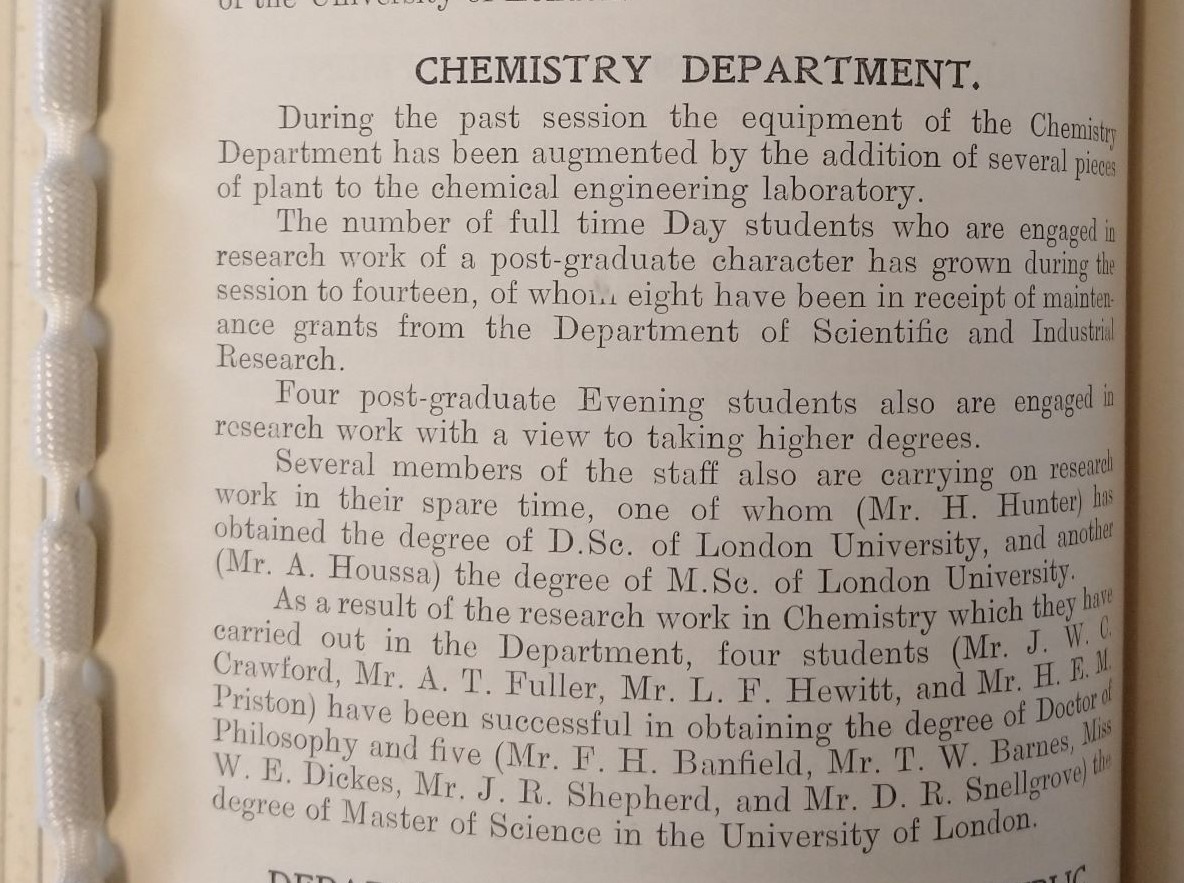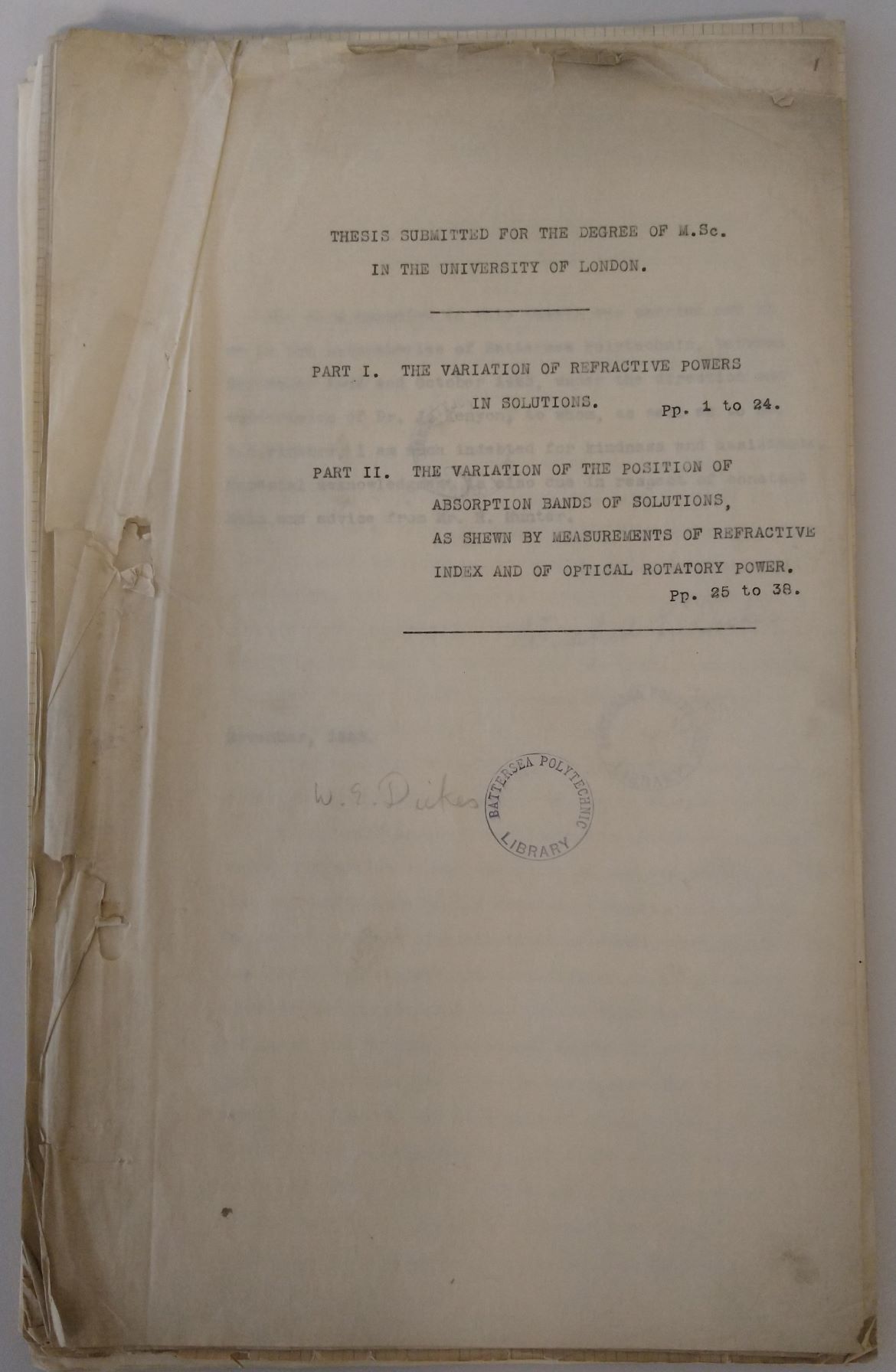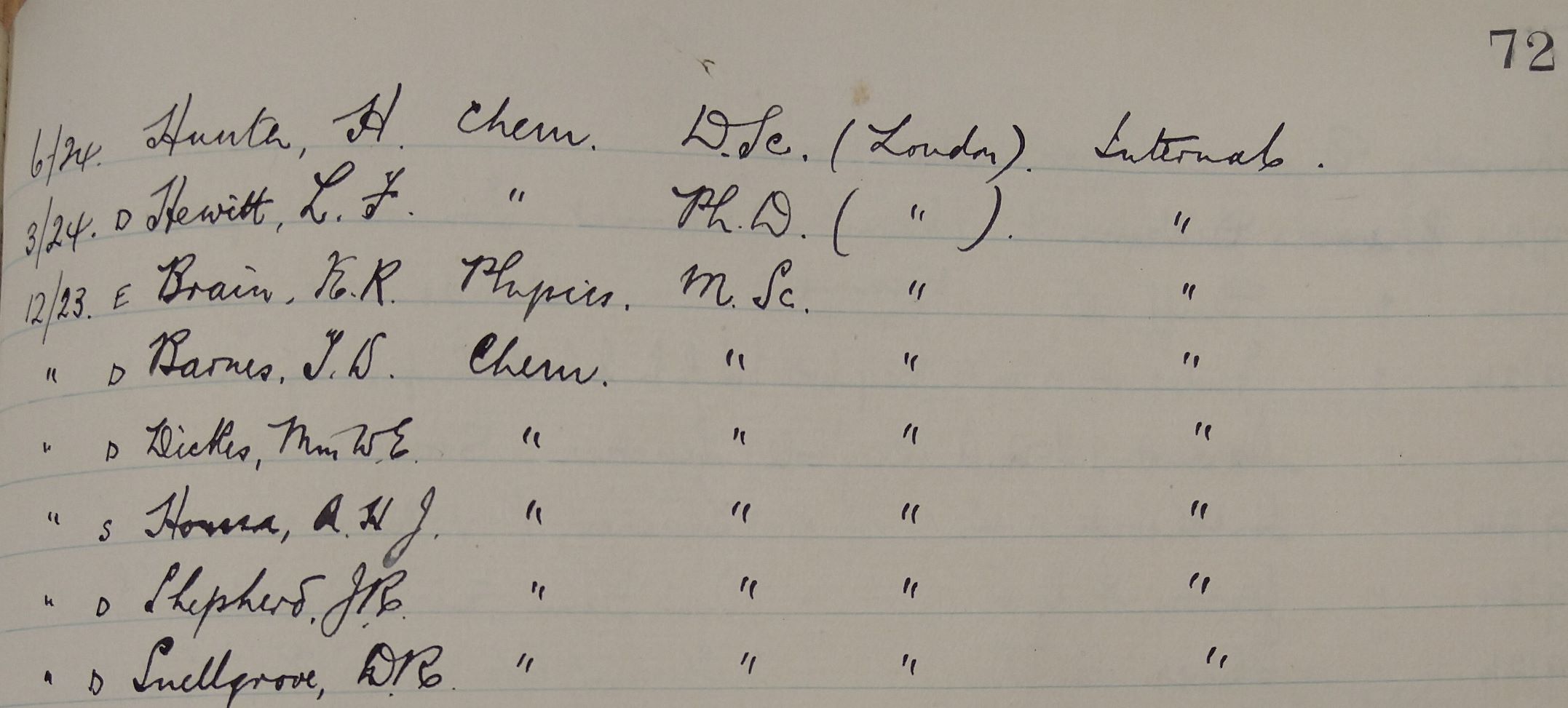For this year’s International Women’s Day we are exploring the stories of some of the women who feature in our Battersea Polytechnic postgraduate dissertations and thesis collection.
Battersea Polytechnic was our predecessor institution, founded in 1891 and formally opened in 1894 with six main departments:
- Mechanical Engineering and Building Trades
- Electrical Engineering and Physics
- Chemistry
- Women’s Subjects
- Art and Music
The courses for women taught by the Domestic Science Training College in the early twentieth century covered a wide variety of topics, of which there are too many to list, but they included ‘traditional’ women’s subjects such as Cookery, Housewifery, Laundrywork, and Infant and Child Care. However, women were not confined to just the subjects taught by the Women’s Department as our Battersea dissertation and thesis collection demonstrates.
Daphne Jackson (1936-1991) is possibly one of most recognisable names in the Battersea collection, her 1962 PhD dissertation submitted to the University of London in the field of Nuclear Physics was titled ‘The Nuclear Density Distribution And Optical Model Parameters Of Li6’. The full text of Daphne’s thesis is available from the University of Surrey Open Research Repository: https://openresearch.surrey.ac.uk/esploro/outputs/doctoral/99514202802346
Daphne became a lecturer at Battersea and went on to be appointed Professor of Physics at the University of Surrey in 1971, making her the first woman to become a Professor of Physics in the UK. Daphne’s many achievements have been well documented, so today we are going to focus on two Battersea alumnae who are less well known.
Dr Winifred E Dickes (1899 -1957)
Winifred Dickes was a chemistry student at Battersea and her 1923 dissertation titled ‘Part 1. The Variation Of Refractive Powers In Solutions. Part 2. The Variation Of The Position Of Absorption Bands Of Solutions, As Shewn By Measurements Of Refractive Index And Of Optical Rotatory Power’ is the earliest dissertation we hold written by a woman. The full dissertation is available from the University of Surrey Open Research Repository: https://openresearch.surrey.ac.uk/esploro/outputs/99516363702346
In the bound 1923-1940 volume of ‘Degree and Diploma Results’ we hold in the archive we can see Winfred’s name recorded as Dickes, Miss W.E. and it is interesting to note that her title of ‘Miss’ is given so as to distinguish her from her male contemporaries.
We also see Winifred mentioned in the ‘Battersea Polytechnic Report of the Principal For The Session 1923-24’, her name is recorded, along with four other students, as being successful in obtaining ‘the degree of Master of Science in the University of London’. In this instance all the students are referred to by their title and initials.

Unfortunately, there are no other records in our archive collection that indicate Winifred’s career path after leaving Battersea, but the use of genealogy websites and wider internet searches have enabled us to find out more about her life.
An internet search using Winifred’s name led me to a 1926 entry in the journal Nature, in which Joseph Kenyon states:
‘As the use of selenium cells and photo-electric devices is engaging the attention of several workers, a brief account of an application to the polarimeter due to one of our research students – Miss Winifred E. Dickes – may be of interest…’ KENYON, J. Photo-electric Polarimetry. Nature 117, 304 (1926). https://doi.org/10.1038/117304b0
The signed declaration made by Winifred in her dissertation enables us to confirm that Dr J. Kenyon supervised her work at Battersea.
A search of the records on a genealogy website enabled me to establish that Winifred was born in 1899 and that her parents had links to Australia. Passenger lists show that as a child Winifred travelled to Australia with her mother.
In 1933 she married Frederick E B Rost (also spelt as Roest or Röst in some of the records), with the registration district recorded as Croydon, England. The Electoral Register for 1937 shows that Winifred was living in Hornsey, London but by 1938 the family had made the move to Australia to enable her husband to take up the position as Principal of Broken Hill Technical College in New South Wales.
Establishing Winifred’s married name and the connection to New South Wales enabled the investigation of an intriguing web search result, a reference to ‘The Winifred Dickes Rost School of Medical Science Honours Prize’ awarded by the Faculty of Medicine and Health at the University of New South Wales in Australia. The prize is awarded for the best performance in SOMS Honours in the final year of the Bachelor of Science or Bachelor of Medical Science degree.
This led me to seek the help of the archive team at the University of New South Wales (UNSW) who were able to provide information from their records regarding the creation of the prize and details of Winifred’s career. They also directed me to other resources to assist with my research for this blog and I am extremely grateful for the help they have provided.
The UNSW Archives kindly provided me with a copy of a letter dated 31 March 1976, written by Winifred’s son, Professor F.W.D Rost, Head of School, School of Anatomy, University of New South Wales, requesting approval for the draft conditions of the Award of Winifred Dickes Rost Prize.
The letter explains that it was wish of Professor Rost’s father that a prize be created in memory of Winifred, who had died nearly twenty years earlier. The letter also outlines Winifred’s scientific endeavours which included a PhD in chemistry and becoming an Associate of both the Royal Institute of Chemistry and the Institute of Physics.
The UNSW archives team also recommend the Trove website https://trove.nla.gov.au/ which enables researchers to explore collections from Australian libraries, universities, museums, galleries and archives. A search using Winifred’s surname returned a number of references to newspaper articles written by Winifred covering a wide range of topics such as dust storms, the origin of petroleum, an experiment to prove the importance of using of fresh water to prevent flowers drooping and atomic disintegration.
Valerie Phyllis Pittman (1909?-1963)
Valerie Pittman’s PhD thesis titled ‘The Investigation Of The Walden Inversion And Allied Subjects Using d-Beta-Butanol And Its p-Toluenesulphinic And p-Toluenesulphonic Esters’ was submitted in 1933 and the full thesis is available from the University of Surrey Open Research Repository: https://openresearch.surrey.ac.uk/esploro/outputs/99516366302346
Valerie’s name appears in the same bound volume of ‘Degree and Diploma Results’ 1923-1940 as Winifred, but this entry records the name of Valerie’s employer and the department she worked in rather than the result of her PhD submission. Again, it is interesting to note that her title is recorded, rather than just her initials.
Valerie’s story after leaving Battersea has been more elusive to discover than Winifred’s but a web search using Valerie’s name has yielded a couple of sources that help us to track her career.
An article titled ‘Walden inversion reactions of d-β-butyl, d-β-octyl, and d-benzylmethylcarbinyl p-toluenesulphonates’ in the Journal of the Chemical Society from 1935 lists (Miss) Valerie P. Pittman as a co-author: https://pubs.rsc.org/en/content/articlelanding/1935/JR/JR9350001072
In the acknowledgements section at the end of the article thanks are given to ‘Trustees of the Gilchrist Studentship for Women’:
‘One of the authors (V. P. P.) thanks the Department of Scientific and Industrial Research for a Grant, and the Trustees of the Gilchrist Studentship for Women’.
This reference to the funding of women in science still resonates today and directly links with Daphne Jackson’s work, decades later, as a campaigner for women in STEM (Science, Technology, Engineering and Mathematics), and with her legacy of supporting researchers in their chosen careers.
Finally, there is also a tantalising reference to Valerie in the 1950 ‘Index of Patents Issued from the United States Patent Office’, the entry reads:
‘Pittman, Valerie P. of Harrow, Middlesex, England, assignor to Eastman Kodak Company, Rochester N.Y. Polymethine dyes and preparation. 2,521,944. Sept 12’
Kodak had a factory and research facility in Harrow which suggests that Valerie worked as research scientist at this location.
Valerie died in 1963.





